 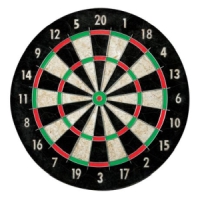 We're going to calculate the probability of getting a high score by throwing one dart. The probabilities we're going to look at are for hitting the bull (50 points), the outer bull ring (25 points) and the triple 20 (60 points).
We're going to calculate the probability of getting a high score by throwing one dart. The probabilities we're going to look at are for hitting the bull (50 points), the outer bull ring (25 points) and the triple 20 (60 points).We're assuming that you have no skill and are throwing randomly at the board, but will hit within the scoring area. We're also going to ignore the thickness of the wire. The radius of the scoring area on a regulation dart board is 17 cm. This makes its area π(17)2 = 907.92 cm2. Probability of Hitting the Bull 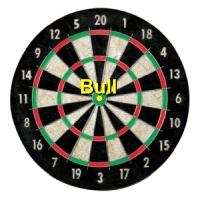 The bull is a circle in the centre. A dart hitting here scores 50 points.
The bull is a circle in the centre. A dart hitting here scores 50 points.Its radius is 0.635 cm. Its area is π(0.635)2 = 1.267 cm2 The probability is determined by calculating the ratio of this area to the total scoring area of the board: Probability of hitting bull = 1.267 ÷ 907.92 = 0.0014 = 0.14% Probability of Hitting the Outer Bull Ring 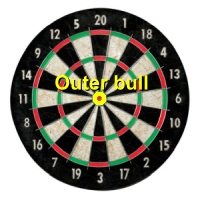 The outer bull ring scores 25 points.
The outer bull ring scores 25 points.It's a ring. To find its area, we'll first find the total area including the bull. Then we'll subtract the bull's area (above). The radius of the outer ring, from the centre, is 1.6 cm. This makes the area π(1.6)2 = 8.04 cm2 Subtract the bull's area 1.267 cm2 to get 6.77 cm2. Probability of hitting the outer bull ring = 6.77 ÷ 907.92 = 0.0075 or 0.75% Probability of Hitting Triple 20 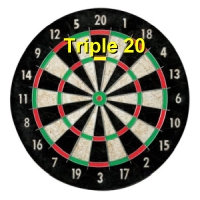
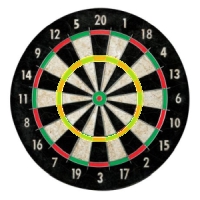
At 60 points, this is the highest scoring spot on the board. Finding its area is a little more complicated. We'll first work out the area of the entire ring of triples, as shown in the picture at the right. 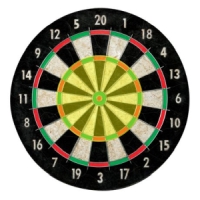
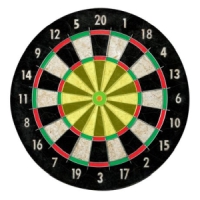
First we'll find the area of the circle to just outside the triple ring (left). Then we'll find the area to just inside it (right). Subtracting will give the ring's area. Outer radius = 10.9 cm. A = π(10.9)2 = 359.01 cm2 Inner radius = 9.89 cm. A = π(9.89)2 = 307.29 cm2 Subtracting: triple ring area = 51.72 cm2 
The final step is to divide by 20, because the triples ring has 20 eqally-sized areas. Area of triple 20 spot = 51.72 ÷ 20 = 2.59 cm2 Probability of hitting triple 20 = 2.59 ÷ 907.92 = 0.0029 or about 0.3% |